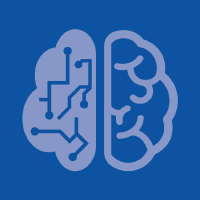Topic Menu
► Topic MenuTopic Editors




Social Computing and Social Network Analysis

Topic Information
Dear Colleagues,
Social networks in the physical world have long been studied in various disciplines such as anthropology, economics, psychology, and sociology. With technological advances, social networks have become popular in the cyber world with the growth of the Internet, social web, and social network sites. Consequently, social computing (SoC) and social network analysis (SNA) have drawn the interest of researchers and practitioners in computational sciences and related disciplines. The SoC examines collaborative, interactive, and social behavior among people, and the SNA investigates and analyzes social structures through the use of network, graph theory, data mining, machine learning, and statistics. The topic invites submissions on theoretical and practical issues on social computing and social network analysis (SoC and SNA), including but not limited to:
- The fundamentals of social computing;
- Theories for social networks analysis;
- Modeling social media;
- Data mining for social media data;
- Communities mining in social media;
- Expert systems for social media data;
- Recommendation systems and marketing;
- Trust and reputation evaluation in (mobile) social networks;
- Methods for social structure and community discovery;
- Methods for tie strength or link prediction;
- Methods for extracting and understanding user and group behavior;
- Big social media data;
- Social computing and network analysis techniques (e.g., social data collection, quality, scalability);
- Social computing and network analysis problems (e.g., centrality, roles, community detection, link prediction, information diffusion, influence propagation, anomaly detection, privacy and security, collective behavior, crowd sourcing, social recommenders, misinformation and misbehavior detection and analysis);
- Trustworthy social network (e.g., reputation and trust in social networks, responsible social network analysis, fairness bias, and transparency in social media);
- Explainable social network analysis;
- Other issues related to the advances of social computing;
- Social computing and network analysis applications and case studies (e.g., attributed, online/offline, probabilistic, semantics, time-evolving social networks).
The topic focuses on one theme—namely, social computing and social network analysis (SoC and SNA). However, it provides authors with multiple choices of venues—namely, five different journals.
Prof. Dr. Carson K. Leung
Dr. Fei Hao
Prof. Dr. Giancarlo Fortino
Dr. Xiaokang Zhou
Topic Editors
Keywords
- social computing
- social network analysis
- social media
- social networks
- information propagation
- social sensing
- internet
Participating Journals
| Journal Name | Impact Factor | CiteScore | Launched Year | First Decision (median) | APC |
|---|---|---|---|---|---|

Applied Sciences
|
2.7 | 4.5 | 2011 | 16.9 Days | CHF 2400 |

Big Data and Cognitive Computing
|
3.7 | 4.9 | 2017 | 18.2 Days | CHF 1800 |

Future Internet
|
3.4 | 6.7 | 2009 | 11.8 Days | CHF 1600 |

Information
|
3.1 | 5.8 | 2010 | 18 Days | CHF 1600 |

Network
|
- | - | 2021 | 18.2 Days | CHF 1000 |

Sci
|
- | 3.1 | 2019 | 47.7 Days | CHF 1200 |

MDPI Topics is cooperating with Preprints.org and has built a direct connection between MDPI journals and Preprints.org. Authors are encouraged to enjoy the benefits by posting a preprint at Preprints.org prior to publication:
- Immediately share your ideas ahead of publication and establish your research priority;
- Protect your idea from being stolen with this time-stamped preprint article;
- Enhance the exposure and impact of your research;
- Receive feedback from your peers in advance;
- Have it indexed in Web of Science (Preprint Citation Index), Google Scholar, Crossref, SHARE, PrePubMed, Scilit and Europe PMC.

